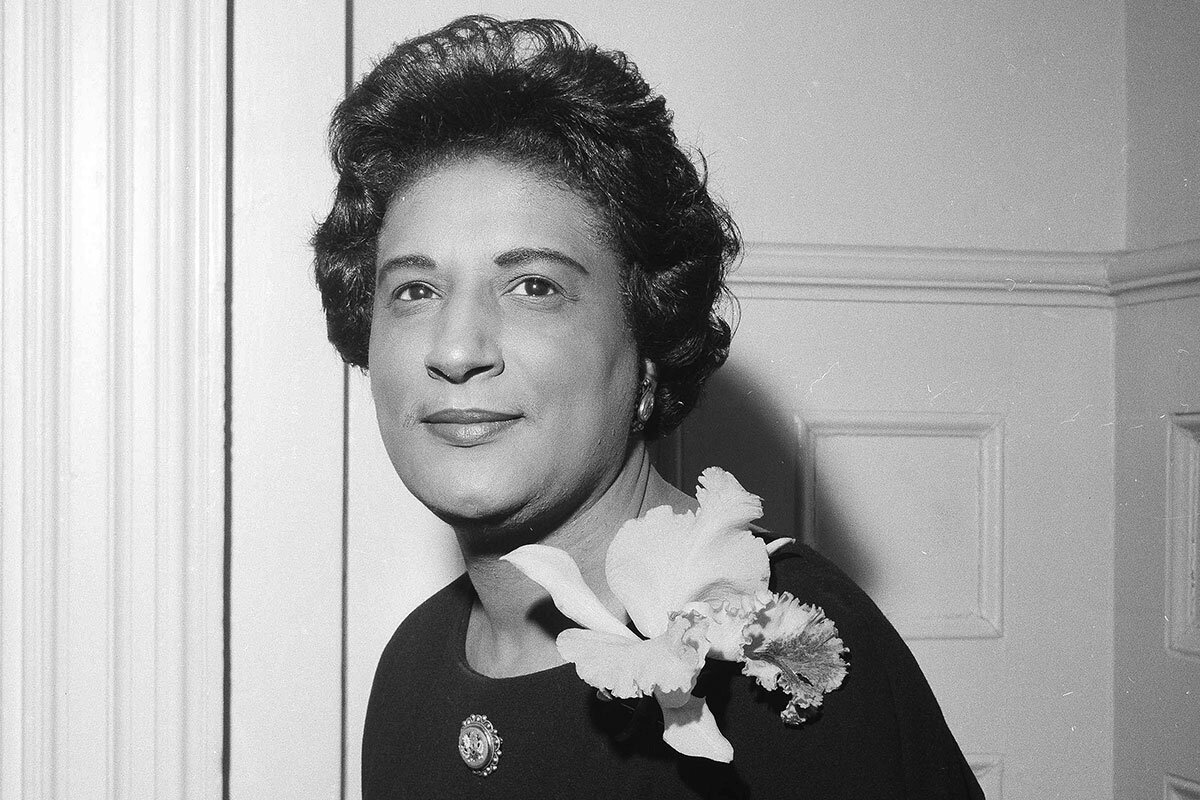Constance Baker Motley: Still my mentor and friend
Loading...
I grew up in Omaha, Nebraska, in the 1960s and 1970s, integrating every school I attended. My parents considered a good education the acme of achievement, a way to pry open the door that led to a better life. They were willing to sacrifice to make sure my brother and sisters and I got one.
We were, of course, grateful for this, even though getting a “good education” meant leaving our friends and the neighborhood we lived in and driving across town toward a great and all-enveloping unknown. Our father had been the first in his family to graduate from college and then from medical school. It hadn’t been easy. He was a legend in our local community, but not in the larger world we were entering. We had seen our father have his share of trouble in that world too. This was a new reality for all of us. How would we manage it? Where would we land? There was no road map to guide us.
During this confusing time, I found solace losing myself in books and periodicals. I had my first subscription to Vogue magazine by the time I was 11, saving up for it on a 50-cent-a-week allowance.
In the pages of Vogue, I encountered a striking photograph of Constance Baker Motley, a woman who would point the way forward, even though I never met her.
After all these years, I recall that picture minutely. She sat on a chair, smiling that trademark, enigmatic smile and looking straight out into the world. Looking, I felt, straight out at me. You couldn’t see her legs in the picture, but you knew they were crossed discreetly at the ankle because this was the way “ladies” were taught to sit back then. And Motley was very much a lady in her smart sheath dress, her stranded pearl necklace.
This was the age of women like Jackie Kennedy, and Constance could well have been Jackie. Except that she was a lawyer. And she was Black. And she was the first person who looked like me I’d ever seen in a national magazine not devoted to the news. Vogue had profiled her because she was the first African American woman appointed to a federal bench. But more important to my young self was the fact that she looked like me – and my mother and my sisters and our family and our neighbors. I knew instinctively that this was a woman who would know something about breaking barriers.
Of course, I already knew about Constance Baker Motley. In our house, in our neighborhood, she had been famous for years. The child of West Indian immigrants who obviously valued education as much as my parents did, she’d graduated from law school at Columbia and been hired by Thurgood Marshall to work at the NAACP Legal Defense and Educational Fund, now known simply as the Legal Defense Fund.
Marshall, who later became the first African American Supreme Court Justice, did not believe in discrimination toward anyone for any reason. He’d hired her as the first woman lawyer at the Fund, and he did not treat her with kid gloves. He had faith in her and put her to work. In short order she represented the Fund in Mississippi – the most viciously segregated state at the time – to push forward a landmark case for teachers’ rights. From there she would become lead attorney in landmark cases that would eventually integrate the Universities of Florida, Georgia, Alabama, and Mississippi. She was instrumental in putting together Brown v. Board of Education, which ruled that segregating schools was unconstitutional, and she was the first African American woman to argue a case before the United States Supreme Court.
I had learned all this by reading about Motley in Jet and Ebony, the staple periodicals of my childhood. But coming upon this picture in Vogue made me see her in a broader world, one that she was helping to create. She was breaking barriers, not only as a Black person but as a woman. I cut that picture out of Vogue and tacked it onto the bulletin board over my desk where I could look at it daily. I thought Judge Motley could teach me a thing or two about moving forward from what the world expected me to be to discover what I could become.
That picture stayed with me – on my bulletin board when I went away to college and then in my wallet when I finished up. Eventually it frayed so much that you couldn’t see her clearly, but I knew she was there, a friend and mentor. She was cheering me on, encouraging me to break through perceived boundaries as a Black woman.
Eventually, I created a fictionalized version of a young Constance Motley for my novel “The Secret of Magic.” I’ve had the privilege of speaking about this book, and the people who inspired it, at both the University of Alabama and the University of Mississippi – schools Motley was instrumental in helping to integrate. Lawyers come to these talks, including many women lawyers. They know about Motley and the groundbreaking work she did to ensure civil rights for all. Through her life, she expanded the idea of what was possible for women. We see this most easily when we look at Supreme Court Justice Ketanji Brown Jackson, but Motley’s work was equally beneficial to Justice Amy Coney Barrett.
I wish I still had that picture, but I don’t – at least not physically. It got lost in the many twists and turns and expansions it inspired. But I carry it with me in my heart and look at it often. Constance Baker Motley in a sheath dress and a pearl necklace – calmly breaking through barriers to justice and leading the way.
Deborah Johnson is the award-winning novelist of “The Air Between Us” and “The Secret of Magic.”






